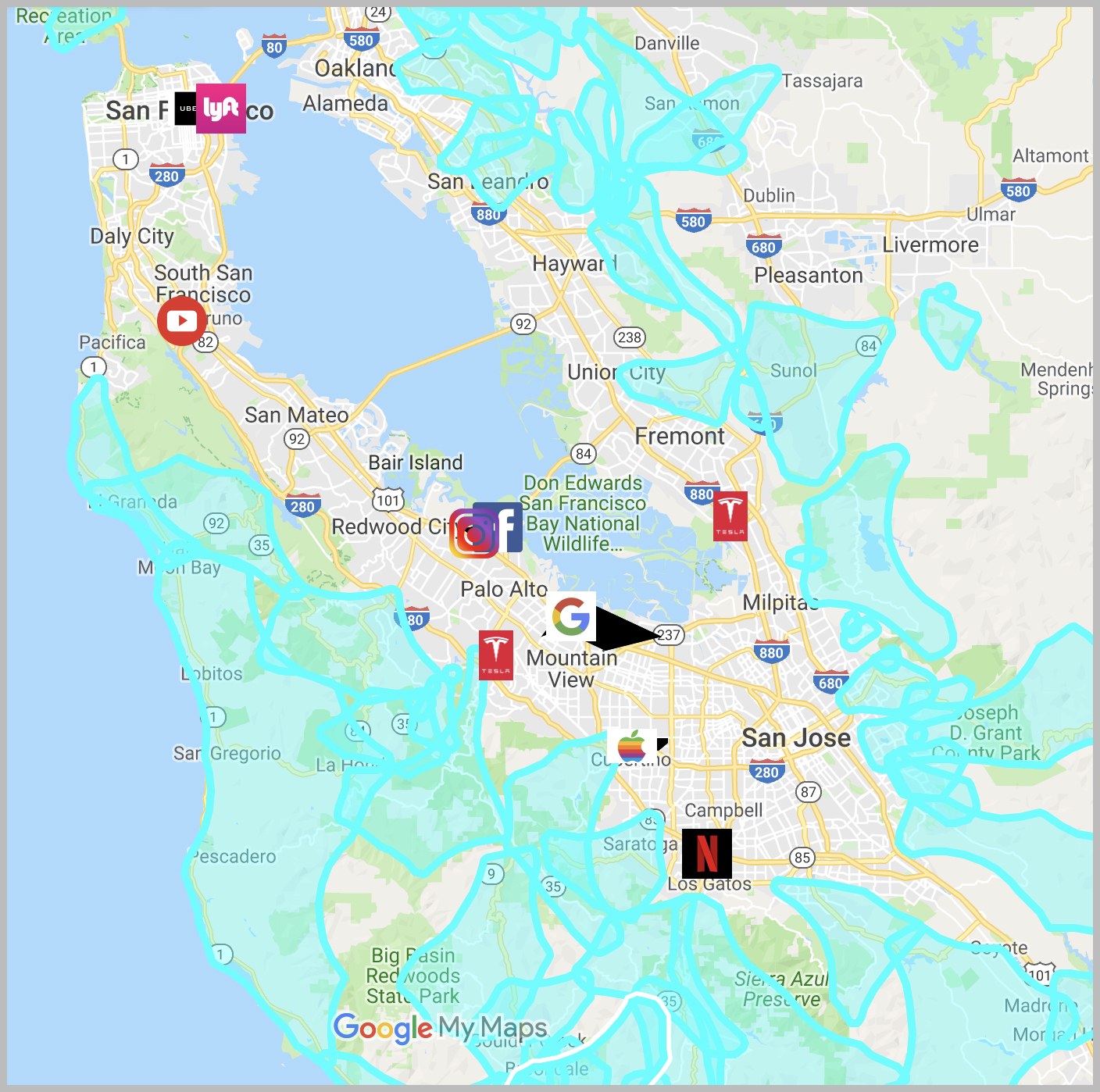Huge swaths of California were without power on Wednesday after the (recently bankrupt) utility PG&E—whose downed power lines caused last year’s Camp Fire—preemptively pulled the plug on hundreds of thousands of customers. The unprecedented move, designed to reduce the risk of wildfires, plunged more than 500,000 homes in 20 counties (and counting) across Northern and Central California into darkness shortly after midnight, and plans are in place to cut power to over 250,000 more. In total, the estimated number of people that could be left without electricity is upward of 2 million (a “customer,” in PG&E-speak, can be an apartment complex or other kind of multiunit building). Though the scope of the blackout is expansive, blanketing the Bay Area, chunks of the region remain conspicuously absent from outage maps: The seats of power for nearly every major tech giant.
It’s far from a coincidence, says Michael Wara, head of the climate and energy policy program at Stanford University’s Woods Institute. If anything, it’s by design. He is one of the state wildfire commissioners, which are tasked with examining issues related to fires tied to utility infrastructure, like the one caused by PG&E in 2018.
PG&E instigated the blackouts in response to dangerous weather conditions—strong seasonal winds primed to dry out vegetation and stoke wildfires—that could jostle power lines and other equipment, sending sparks onto flammable vegetation below. But not all power lines are created equal.
“What PG&E is doing is blacking out the kind of low voltage wires that deliver power to homes,” says Wara. “But, typically, big commercial customers, like a tech headquarters … tend to be located closer to the bulk transmission system [and] the high voltage lines, which are much less impacted by this outage.”
The types of power lines traditionally seen dangling overhead in residential areas and neighborhoods are considered more of a wildfire risk because of their proximity to the ground and increased likelihood of being surrounded by trees and other forms of vegetation, he explained. Bulky high-voltage transmission lines—which are designed to carry large amounts of energy to large industrial users and local distributors—just aren’t vulnerable in the same way. Wara says they tend to be built to higher standards, making them less prone to wind damage.
“The lines in the South Bay where the tech headquarters are, like in Mountain View and Santa Clara County, are [surrounded by] wide open space—there’s basically no vegetation. It’s flat,” which makes it an even lower fire risk, Wara explained. “The mountains in between Silicon Valley and the ocean, [however,] are covered in forests, extremely high risk, and covered in very valuable real estate.” Hence, the blackout.
